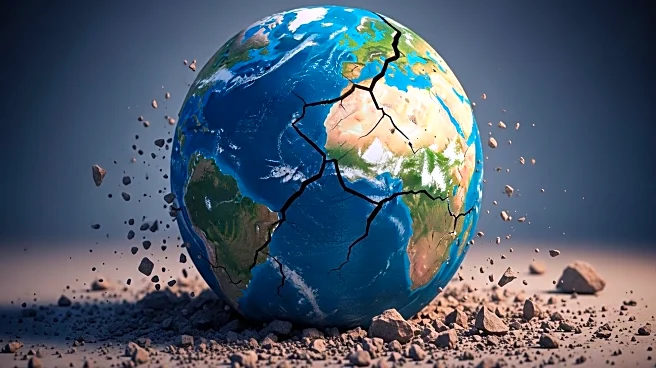What's Happening?
A significant 7.4 magnitude earthquake struck near the east coast of Russia's Kamchatka region early on July 20, 2025. The U.S. Geological Survey reported that the earthquake's epicenter was located 111.7 kilometers east of Petropavlovsk-Kamchatsky, with a depth of 39 kilometers. Despite the strength of the quake, there were no immediate reports of injuries or major damages. The Pacific Tsunami Warning System initially indicated a potential tsunami threat but later retracted the warning. The Japan Meteorological Agency issued warnings to coastal areas about slight changes in sea levels, suggesting minimal likelihood of damage.
Why It's Important?
The earthquake's occurrence in the Pacific Ring of Fire, a region known for its seismic activity, underscores the ongoing geological volatility in this area. While the immediate impact appears minimal, the event highlights the importance of preparedness and monitoring in regions prone to earthquakes and tsunamis. The lack of significant damage or injuries is a relief, but it serves as a reminder of the potential risks associated with living in such geologically active zones. This incident may prompt further evaluation of emergency response systems and infrastructure resilience in affected areas.
What's Next?
Authorities in Russia and neighboring regions will likely continue to monitor aftershocks and assess any potential structural impacts. The event may lead to increased scrutiny of building codes and emergency preparedness plans in the region. Additionally, international agencies might collaborate to enhance early warning systems and public awareness campaigns to better prepare for future seismic events.
Beyond the Headlines
The earthquake's occurrence in a remote area with minimal immediate impact may not capture widespread attention, but it raises questions about the long-term implications of living in seismically active regions. It also highlights the need for ongoing research into earthquake prediction and mitigation strategies to protect vulnerable communities.














